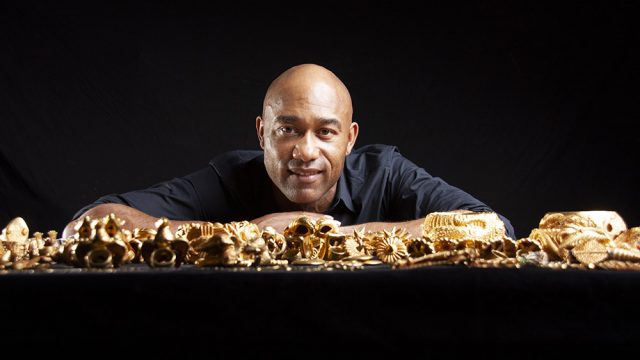This week, I am introducing you to Martin Welsh, one of the technicians working on the Cast Court project and whose ‘magic’ operates in the beautiful frame-supports he builds to facilitate object moves and safe storage.
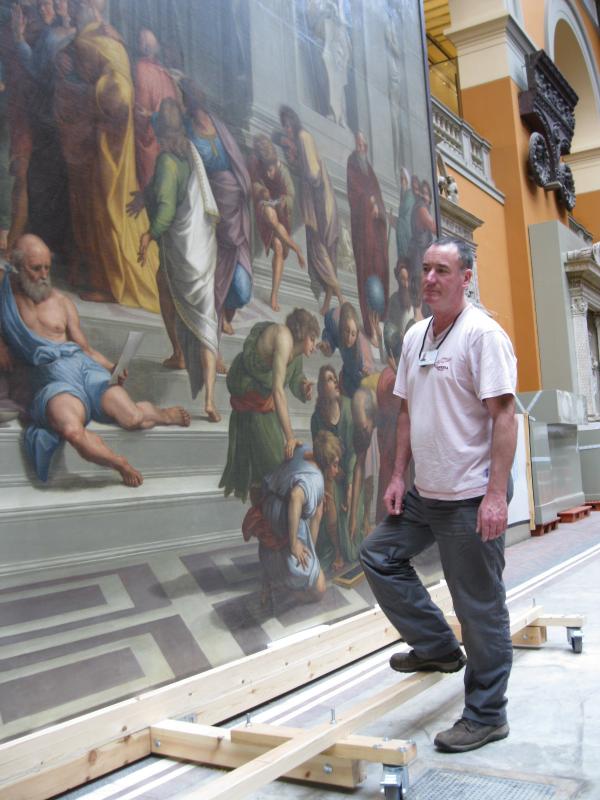
Martin joined the V&A in November 2010, after spending three and a half years building exhibitions at the Imperial War Museum. Like, I am progressively finding, most people I speak to, the Cast Courts are one of his favourite spots in the Museum.
Martin is a skilled carpenter, and is very good at building solid, easily manageable and moveable support and/or carrier frames. He explains: ‘Matthew [the manager of Technical Services’ Display team], who comes from an engineering background, usually comes to me and says “I need to you to build a thing”. He hands me a sketch, showing me the principles of what it needs to do. I go and work out how to put it together and then we discuss the ideas together. Matthew wants these things to be done in house, from timber, and made by the person who will use it. He’s very open and pragmatic.’
Martin was part of the team who, lead by Tony Ryan, took the cast of Giambologna’s Jesus off the wall and he built its support frame. He recalls the move as a difficult lift: the object had been in its position for such a long time that there was no detailed record of how it had been fitted. The scaffolding was built in stages, as close-up examination of the fittings revealed that the solution originally discussed (to separate it from its cross) had to be rethought: the object had to come down in one piece, on a sling, using large equipment.
Its long limbs and slight structure make it a more vulnerable object than, say, a wider, more compact piece. Sculpture conservator Charlotte Hubbard advised the team on how to best manipulate it and how wrap his arms.
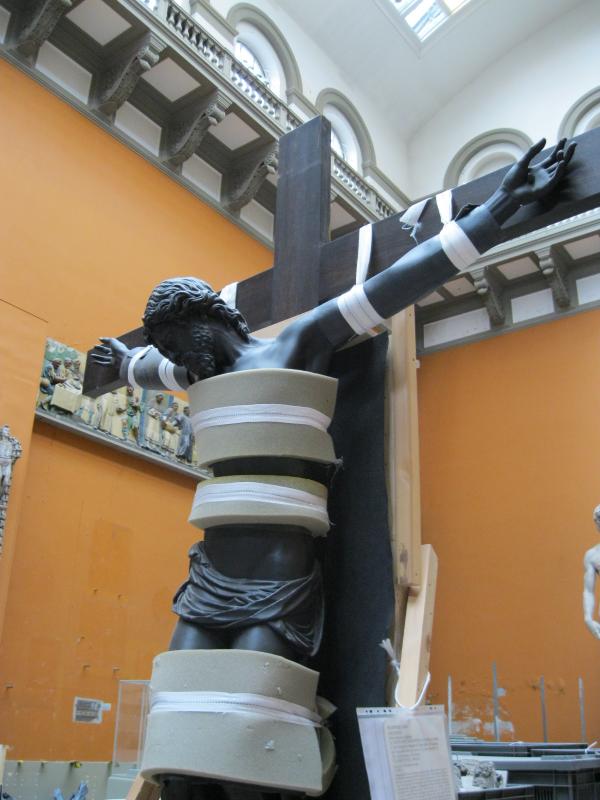
Martin explains: ‘Some objects you just don’t know what they are going to do. It’s very important to look at their previous history: it’s like they have a criminal record. Charlotte will come along, saying “we know this about its structure, it might be susceptible to break here or there… don’t hold it from this point… etc” – Each object has got its personality, the good parts and the bad parts’.
It required as many as five people to take Jesus down. The frame was partially prepared prior to the move, and then adapted to perfectly fit the object.
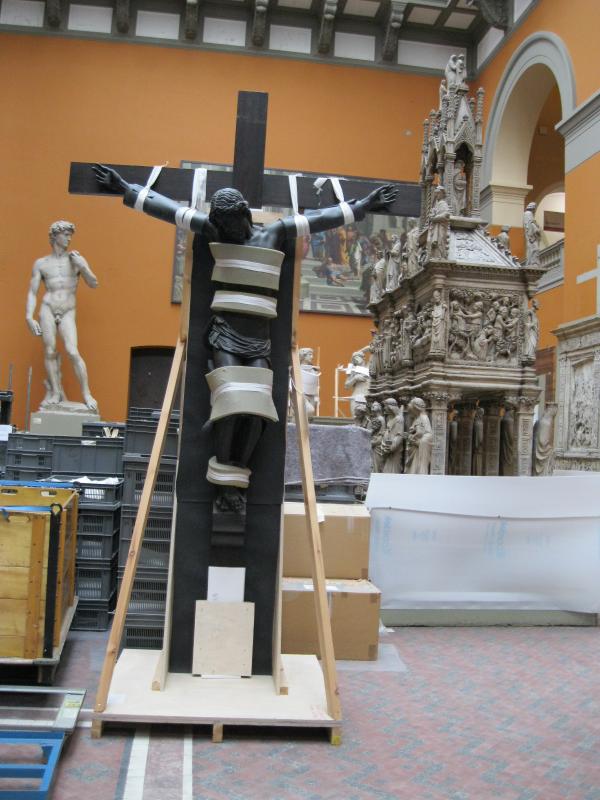
‘He is so tall’, Martin says, ‘down on the ground, he looks much bigger and three dimensional. The bandages make him look hilarious.’ In its new appendage, it was first stored in a corner of 46A, the side of the Cast Courts that is remaining open. “He got sketched quite a bit. As soon as you change the environment of one of the sculptures, people want to come and see it.’ Martin has seen artists pausing from their intended motif to sketch a sculpture being put in a crate. Likewise, our visitors are regularly seen peering through the hoardings or standing on the balcony above the Courts to see how the renovation works are going.
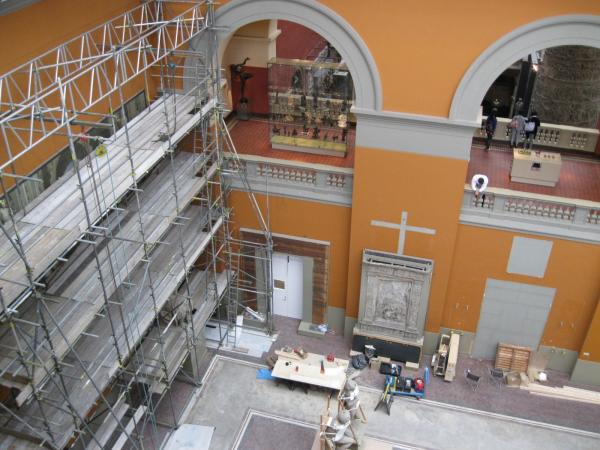
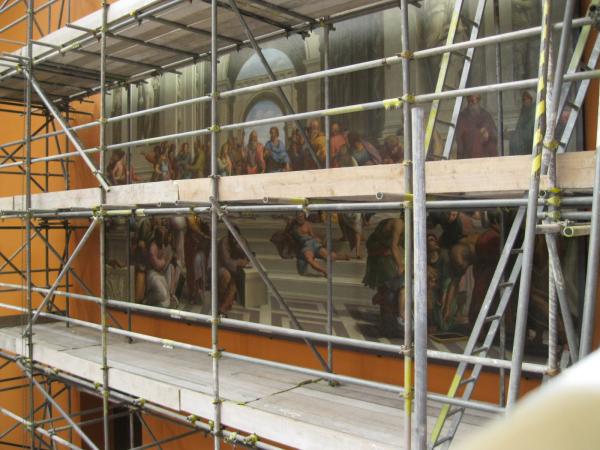
It was built in about a week and with the utmost care, as it comes so close to the painting, but it is also just inches away from Michelangelo’s David, and literally built above the Moses.
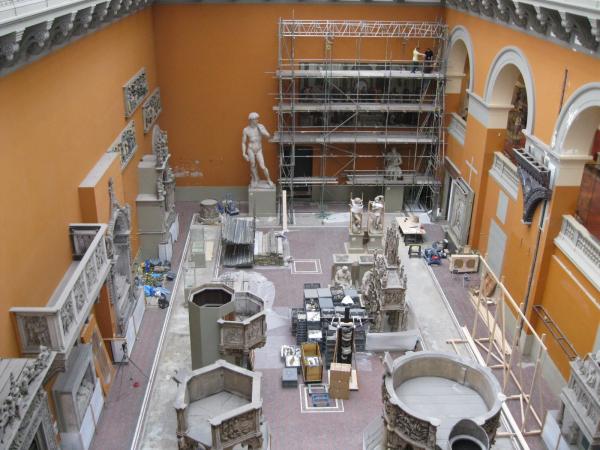
The scaffolding was first made to reach all the way to the top of the painting, so the technicians could get to its fixings. Two gantries were built above, to which the technicians tackled chains in order to bring the painting down on slings. Then Unique took half of the scaffolding down, to the level of the bottom of the painting, so that it could be slid forward on chains and onto its new, temporary ‘easel’.
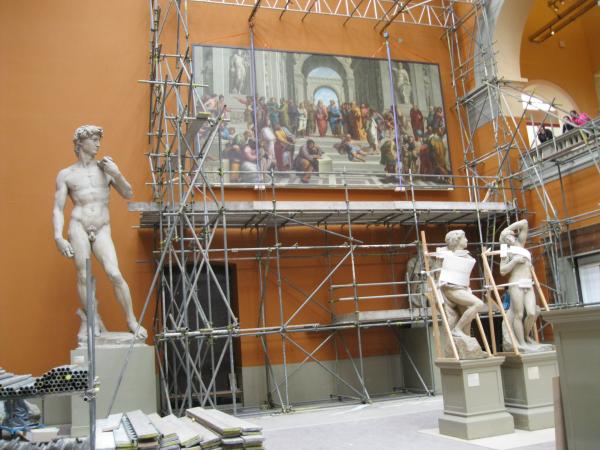
It must be said that the ‘easel’ is like a work of art in its own right. Experienced in building houses due to his carpentry background, Martin compares the building of the easel to that of a house: effectively four roof trusses, bolted together and attached to eight wheels.
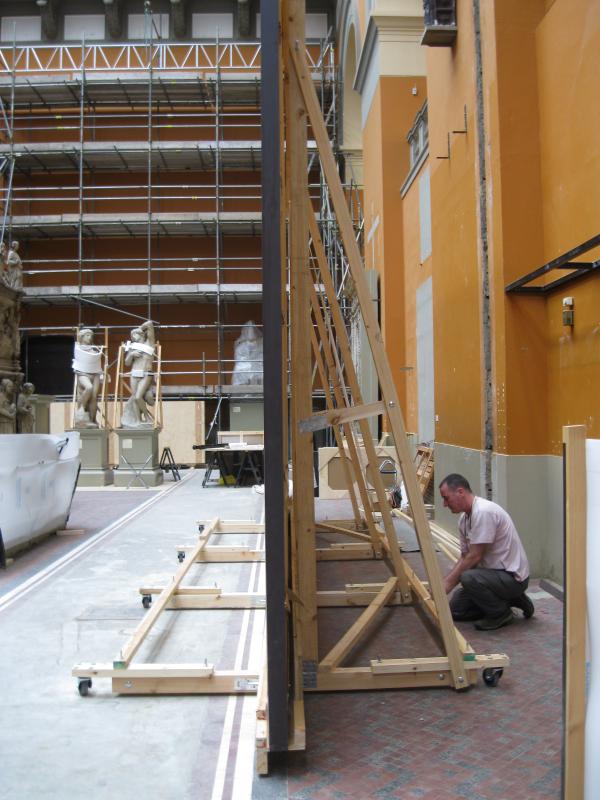
It was also designed in a way to allow Conservation to work on the painting before it comes back up on display (a future blog entry by Nicola Costaras will take you through the conservation work). Because the ‘easel’ is a couple of metres deep and could not come close enough to the scaffolding, the painting couldn’t be dropped down vertically. The ‘easel’ was thus tilted back, so the painting could be guided onto the ‘easel’ at an angle, and then eased down onto the floor, to be kept vertical again.
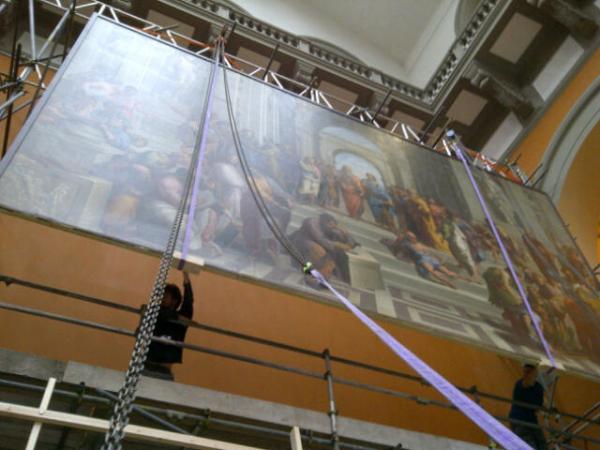
As it came down, it required a total of eight people (the V&A’s technicians were even joined by the scaffolders), pulling at ropes and chains.
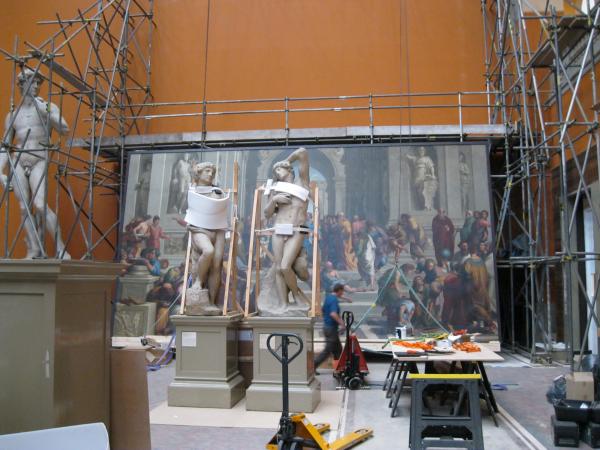
Martin says, however that it was a ‘very well-behaved painting’, and he would love to be involved in putting it back on the wall. He explains that once you get acquainted with individual objects, you grow really fond of them. ‘I talk to them’ he says (something that more than one Museum-person, including myself, readily admits to). ‘When you move these objects, because you have to care for them so much, slowly, gently doing the job as you can’t take any risk …You get to know them, and when you see them again you say “hello”.’
